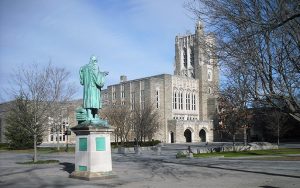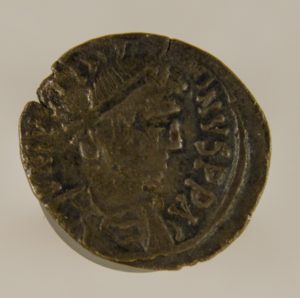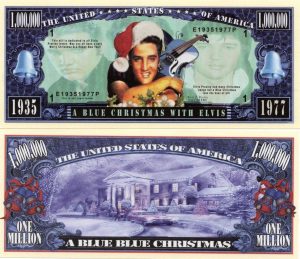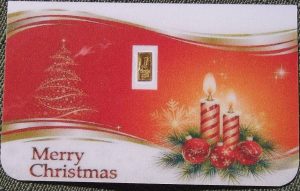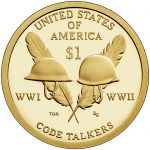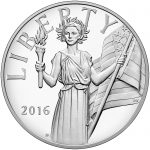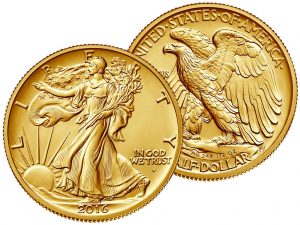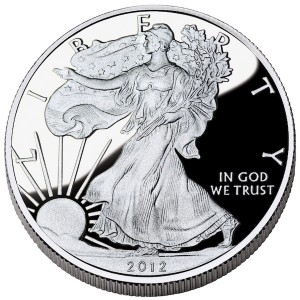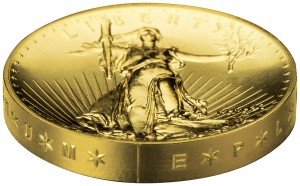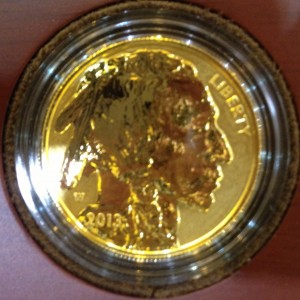Weekly World Numismatic News for May 30, 2021
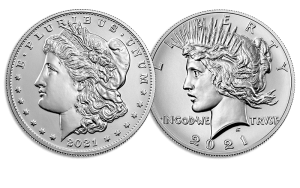 When it comes to identifying the numismatic-related news of the week, you cannot ignore the fiasco caused by the U.S. Mint. It is a repeat of every significant release for the last 15 years: underestimate demand, make purchasing policies that are out of touch with the demand anticipated by the industry, not have the infrastructure in place to meet the demand, apologize and promise to do better later.
When it comes to identifying the numismatic-related news of the week, you cannot ignore the fiasco caused by the U.S. Mint. It is a repeat of every significant release for the last 15 years: underestimate demand, make purchasing policies that are out of touch with the demand anticipated by the industry, not have the infrastructure in place to meet the demand, apologize and promise to do better later.
Wash, rinse, and repeat.
Collectors are not taking this situation in stride as they previously have. According to congressional staffers who spoke on the promise of anonymity, the calls to their offices bordered on outrage. The stories were amazing.
One staffer said that their district office received a call from an assisted living center in their district. Five people were on the call. Each made a statement and passed around the telephone, so they could all tell their members of congress how upset they were. One of the people told the staffer about buying his first proof set from the U.S. Mint in 1958.
Another staffer said that the House Financial Services Committee redirected calls made to their offices. Someone investigated and decided that something I wrote the day of the sale prompted the calls.
A source with the Treasury Department said that they logged a lot of calls on Wednesday. Although they would not break down the distribution of the calls, sources suggested that calls made to the main Treasury caught Secretary Janet Yellen’s attention.
Although members of the numismatic industry called, everyone I spoke with said it was the public’s outrage that caused the U.S. Mint to take quick action.
Instead of putting up with bad service from the government, the people stood up and asked for answers. The government responding to the people is the best news of the week. Now let’s hope the U.S. Mint does not waste this moment.
And now the news…
 → Read more at torontosun.com
→ Read more at torontosun.com
 → Read more at thewestonforum.com
→ Read more at thewestonforum.com
 → Read more at leader-call.com
→ Read more at leader-call.com
November 2016 Numismatic-related Legislation Review
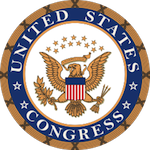 I begin every month with a review of the numismatic-related legislation that occurred in the previous month. Although congress returned to work on November 14, not much has been done. The services I subscribe to so that I can receive alerts on votes or signed legislation shows not much has been done except for a few bills that have unanimous support or asks to rename a building, park, or some other federal property in the name of a hometown hero.
I begin every month with a review of the numismatic-related legislation that occurred in the previous month. Although congress returned to work on November 14, not much has been done. The services I subscribe to so that I can receive alerts on votes or signed legislation shows not much has been done except for a few bills that have unanimous support or asks to rename a building, park, or some other federal property in the name of a hometown hero.
Given the results of the election, sources say that the partisan rancor is so fervent that even the most cordial relationships have turned icy. These feelings are not limited to cross-party relationships. There is a growing divide between ideological members in both parties that could almost split the congress into four parties. Many are predicting more gridlock ahead—as if there was not gridlock in the past.
I continue to hope that congress can see past their personal issues and do something right like pass a commemorative coin program for the 50th anniversary of Apollo 11. If you have to name the top defining events of the 20th century, Apollo 11 has to be on that list.
Princeton displays coin collection
While growing up in the New York City area, my mother felt that her children should go out and see the area which we lived. New York has a lot to see and do, but many do not visit the attractions even though many are a short subway ride away. Vacations were the same, whether it was to the Pennsylvania Dutch Country or Cooperstown, the destination was always something more than just seeing the sights.
After I started collecting coins, one of the trips was to the Chase Manhattan Bank Money Museum. Before the museum closed in 1974 and its assets were donated to the Smithsonian Institute for a tax deduction, the Money Museum was something for a wide-eyed pre-teen to see. I remember there was a Chinese Money Tree, a bronze tree structure with holed coins attached to its structure. Although I later learned it was a symbol of good luck, the image was important since my parents used to tell me, “Money doesn’t grow on trees.” Of course, the precocious child in me used the image to contradict that claim!
Museums tell the story of our history with props. With notable exceptions, numismatics are amongst the props used to tell the stories. Hollywood-themed museums have checks signed by the producers of major motion pictures and endorsed by actors. Political exhibits display the medals used to entice voters to vote for them. Colonial recreations use scrip that looks like paper money of the time to allow you to buy in their shops—Colonial Williamsburg used to do this many years ago.
To add to the stories, Princeton University reported that part of Princeton’s collection of ancient and medieval coins will be on permanent display at the Firestone Library on the Princeton campus. Princeton boasts a collection of over 110,000 pieces including coins, tokens, paper money, medals, and military decorations.In 2015, members of the Princeton University Art Museum Student Advisory Board (SAB) proposed that the library created the exhibit to supplement their education into ancient and medieval history. Constantin Weickart, a member of the SAB said, “I got interested in coins through courses in Late Antiquity, and basically all my professors used coins in their lectures. I saw how important coins are not only as objects but also as historical sources. Princeton has one the best coin collections in the world.”
SAB members Weickart, Daniel Elkind, and Hannah Baumann designed the exhibit including writing the labels that were associated with the coins and other images. They worked with Dr. Alan Stahl, the University curator of numismatics.
“[The coin collection] is there primarily for educational use. A lot of classes visit the coin collection during the course of the year,” Stahl said. “Students come to do research for term papers or get images of coins to use in presentations.”
Stahl added that the exhibit is also open to outside scholars for their research, especially since the coin collection will not be part of the rotating exhibit hall but part of the permanent display.
Although the collection is maintained for research, the Princeton Library is open to the public allowing anyone to visit the exhibit. Outside researchers can contact the library to gain access to their collection and some of the collection can be viewed online.
Sample of Princeton Collection
- Byzantine Era Thrace tremissis gold coin of Anastasius I (491-518)
- Carthage silver half-siliqua Justinian I (527 to 565)
- 1786 Benjamin Franklin Medal by the Paris Mint
- Images courtesy of Princeton University.
- Quotes courtesy of The Daily Princetonian.
A different numismatic gift idea
As the weather turns colder and the fowl shudder for other reasons, we turn our thoughts to what to give as gifts. As numismatists, we can always find something based on the hobby that would be nice and maybe spark interest in collecting. Or we can find something fun that is somewhat related for those we know will never be converted.
We begin the weekend that starts with Black Friday and extends to Cyber Monday, terms that have little meaning these days except as marketing mechanism, if we are not going to fight the crowds at least we can plan.
My planning began two weeks ago when I wanted to do something different for my coin club’s December meeting. As the club greeter, I set up a table at the door to give away tickets for door prizes and sell raffle tickets. Door prizes are usually low-value foreign coins or an unusual U.S. coin, such as one with a minor error. Since I am responsible for selecting the door prizes, I try to follow a theme and include at least one coin containing silver. The raffle is usually a small gold coin or a silver crown-like coin, depending on what the club treasurer can find.
Our December meetings are special in that it is our annual charity auction. Members donate items to the auction and everyone in attendance bids for what they want. All proceeds are donated to a local charity. This has been a club tradition dating back to its founding in 1959.
While thinking about the door prizes and raffle, I was scanning online auctions looking for ideas. One idea came when I stumbled across currency-like notes with holiday themes. When I found a $1 million note with “A Blue Christmas with Elvis” I knew I found a door prize. Since I was buying two for the coin club, I bought a few more to include in greeting cards that I will be mailing this year.
To be inclusive, the next search was to look for Chanukah currency. Although the selection was not as varied as the Christmas notes, I found one that looked nice and was going to satisfy the coin club and be added to my holiday cards.
Then my thoughts turned to the raffle. We try to raffle gold coins whenever we can buy them at a cheap enough price. However, with the price of gold over $1,200 per troy ounce and over $189 higher than it opened in January, finding something affordable was not easy. As I was searching I found a listing for 1-grain bars mounted on holiday-related cards. I know that 1 grain is not a lot of gold. In fact, it comes out to about $2.50 in gold. But to buy four at $5 per card to donate for the raffle where the proceeds go to charity, that would be something different.
After purchasing the four cards, I started searching for other gold bars and found everything from one-third of a gram and heavier. Even with the current price of gold, finding special bars that could be purchased for $25 or less gave me an idea to buy a few to include in cards to special people.
Of course, this type of gift giving is not for everyone. But if you want to do something with a numismatic theme and make it look special for not a lot of money, think about buying these light gold bars. I think you will impress your gift recipient.
Happy Thanksgiving 2016
All in a Word
- Poem courtesy of teachingfirst.net.
- Coin images courtesy of the U.S. Mint.
Can we now move on?
In 1916, the U.S. Mint began to circulate three iconic coin designs that remain favorites amongst collectors. To celebrate, the U.S. Mint issued 24-karat gold centennial versions of the Mercury Dime, Standing Liberty Quarter, and Walking Liberty Half-Dollar. The designs of the coins are the same as their century-old counterparts except the gold specification was added. Earlier this month, the U.S. Mint released the 2016-W Walking Liberty Half-Dollar 24-karat gold coin to complete the series.
- 2016-W Mercury Centennial Gold Dime
- 2016-W Standing Liberty Centennial Gold Quarter
- 2016-W Walking Liberty Centennial Gold Half-Dollar
With the release of the gold Walking Liberty Half-Dollar, every coin design that was part of President Theodore Roosevelt’s “pet crime” that has gone out of circulation, except the Bela Lyon Pratt quarter and half-eagles and the Saint-Gaudens $10 eagle, have been reproduced at least once. Only Victor D. Brenner’s Lincoln Head Cent design remains in circulation even though the reverse has been redesigned a few times.
Isn’t it time we move on?
Let’s forget the legal limitations placed on the U.S. Mint that only allows them to do a tribute like this in gold even though the original coins were struck in silver, how many collectors are really interested in buying these coins? How many can afford these coins?
Judging by the listings for online auctions and dealers that specialize in modern precious metals, it seems that the alleged sellout of the gold Mercury Dime was because of speculation. While there will always be some opportunists in any market, the appearance of the churn in that market feels more like people looking to make money rather than collect, especially since its $209 issue price is more affordable.
Now, both the Standing Liberty and Walking Liberty gold coins are still available. With the limited availability, why aren’t collectors buying these coins?
Aside from the cost of a gold coin, how many younger collectors or even those that are a part of Generation X have any connection to those coins? It is possible we Baby Boomers have seen these coins in circulation, even sparingly. I was able to find Mercury dimes and Buffalo nickels as late as the very early 1970s before they were all removed from circulation. My interest in collecting started when I found Indian Head cents in pocket change.
I am not saying that these designs are unworthy of a tribute. As a collective, they are arguably the most iconic designs of U.S. coinage. But what many consider the best of the best will live on as part of the American Eagle, Buffalo 24-karat, and the soon-to-be palladium bullion programs.
Isn’t it time we move on?
- American Silver Eagle Proof
- 2009 Ultra High Relief Double Eagle Gold Coin
- 2013-W American Buffalo gold reverse proof obverse
Sales of mint and proof sets are down. Sales of commemorative coins are not meeting expectations where only a few have been sellouts. And the only modern coin that has seen any respect from the Baby Boomer and older collecting community was the 2014 50th Anniversary Kennedy Half Dollar gold coin.
It is time we move on.
The 115th congress will be sworn into office on January 3, 2017. Giving the congress time to get settled including my representative who will be entering his first term in the House, I will write to him to propose a that a silver program similar to the 24-karat gold program be created. Maybe, if coins are offered in silver, a more affordable metal, we can use those coins to generate additional interest in collecting.
It may not be much, but it is a start!

